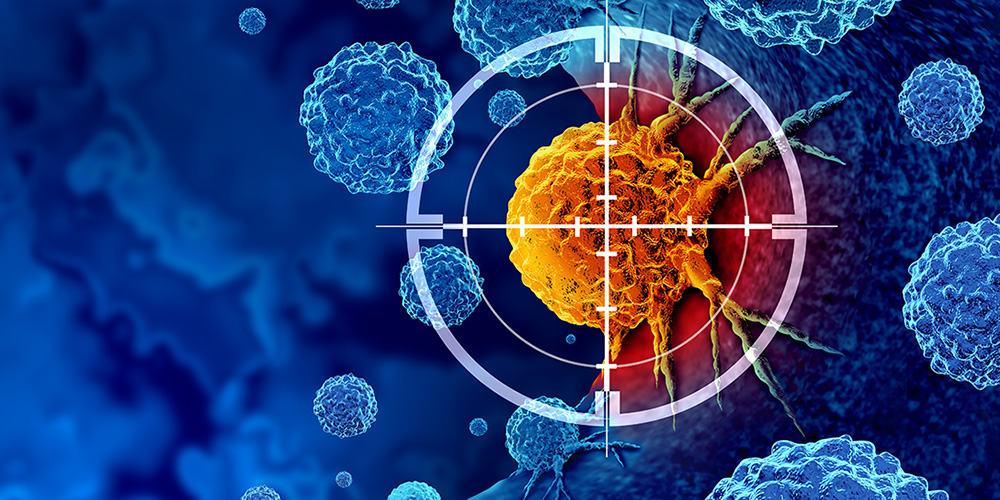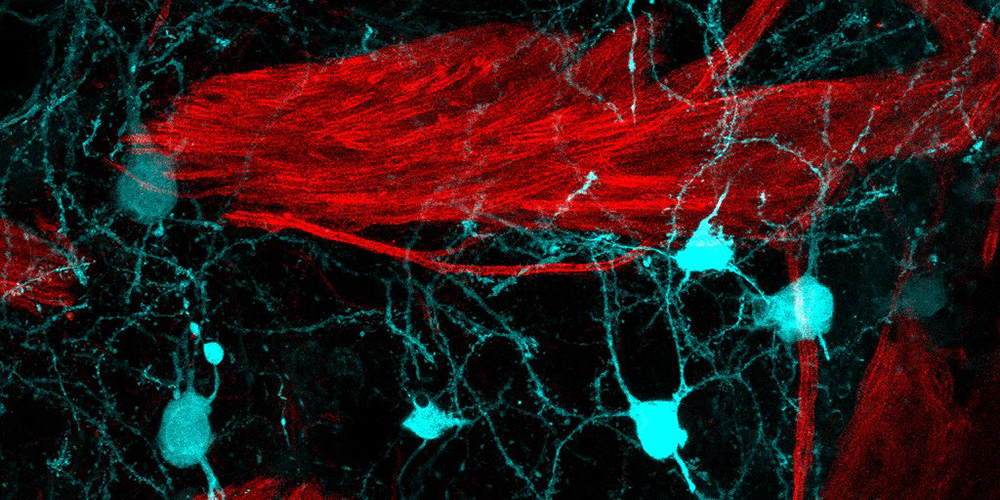Gentler cell therapies for blood cancer
Researchers have developed an approach to “deleting” a blood system affected by leukemia while simultaneously building up a new, healthy system with donor blood stem cells. Writing in the journal Nature, the team reports on the promising results obtained in animal experiments and with human cells in the laboratory.
22 May 2024 | Angelika Jacobs
In aggressive cases of leukemia, the only chance for a cure is to replace the diseased blood system with a healthy one. Although the transplantation of donor blood stem cells is a well-established form of treatment, it is an onerous process for patients. First, chemotherapy is used to remove the body’s own blood stem cells as well as most of the blood cells. Only then do the attending physicians intravenously administer the stem cells from a suitable donor to the patient. This procedure is associated with side effects and potential complications.
The team led by Professor Lukas Jeker from the Department of Biomedicine at the University of Basel has taken a different approach. Writing in the journal Nature, the team describes how all blood cells can be removed from a leukemia sufferer in a targeted manner while a new blood system is built up at the same time. The results represent the successful completion of a project funded by the European Research Council with a Consolidator Grant of EUR 2.4 million.
Mixing console for blood systems
The system established by the researchers in Jeker’s team can be imagined as a mixing console, where a DJ gradually fades down the level of the first song while raising the volume of the second until the first track dies away completely and only the second is audible.
The fading-down process works as follows: Specific antibodies coupled to a cytotoxic drug recognize all blood cells in the patient’s body based on a surface structure. This marker is common to all the different types of blood cell (both healthy and diseased) but does not appear on other cells of the body. Bit by bit, the antibody-drug conjugate therefore recognizes and destroys all cells of the diseased blood system.
While this is taking place, the second song also starts – that is, the patient receives a transplant of new, healthy blood cells from a suitable donor. To prevent the antibody-drug conjugates from also attacking the new blood stem cells, or the blood cells they produce, the researchers use genetic engineering techniques to modify the donor stem cells in a targeted manner. Specifically, they introduce a small change in the surface molecule so that the antibodies don’t recognize the new blood cells. The researchers refer to this targeted modification of the donor stem cells as “shielding,” because it acts like a protective shield against the cancer treatment.
Elaborate search for suitable regulators
The two first authors of the study, Simon Garaudé and Dr. Romina Matter-Marone, worked with an interdisciplinary team of bioinformaticians, biochemists, genetic engineering specialists, and clinicians from academia and industry to select the best-suited target structure – and the best protective modification for the fading-down process – from the multitude of surface molecules on blood cells. The chosen molecule, known as CD45, proved extremely promising in trials on mice and human cells in the laboratory.
“We needed a surface molecule that appeared with approximately the same frequency on all blood cells if possible, including the leukemia cells, but that wasn’t present on other cells in the body,” explains Jeker. CD45 met this requirement and, at the same time, was also suitable for “shielding” – in other words, it could be modified on the donor blood stem cells in such a way that these cells were protected from the cancer treatment but the function of CD45 remained completely normal.
Applications beyond cancer
“The new approach could pave the way for new treatment options for patients whose state of health is incompatible with the chemotherapy needed for stem cell transplantation,” says joint first author Romina Matter-Marone. Although further tests and optimization are needed, the aim is for initial clinical trials to begin in just a few years’ time.
The “mixing console for blood systems” also opens up further possibilities, as joint first author Simon Garaudé explains: “We show how cells that are ‘invisible’ to a blood cell remover can be used to swap out the entire blood system.” This, he says, is an important step toward a programmable blood system that could also assume functions on demand – for example, to correct a serious genetic defect or to impart resistance to specific viruses such as HIV.
Original publication
Simon Garaudé, Romina Marone et al.
Selective Haematological Cancer Eradication with Preserved Haematopoiesis
Nature (2024), doi: 10.1038/s41586-024-07456-3



